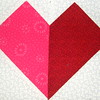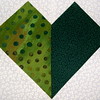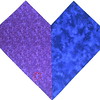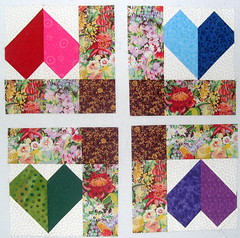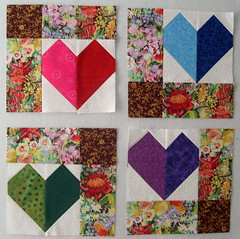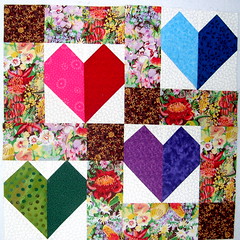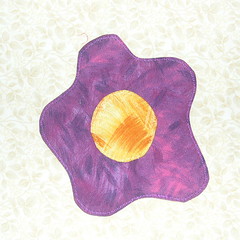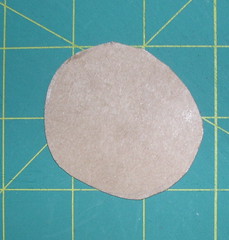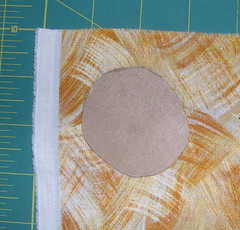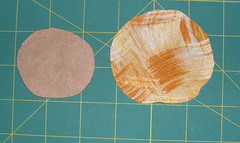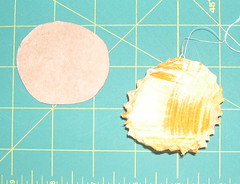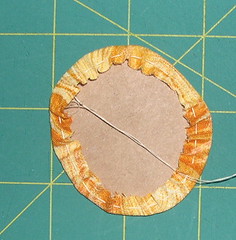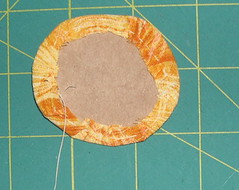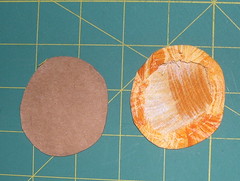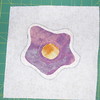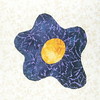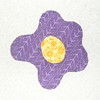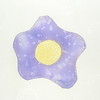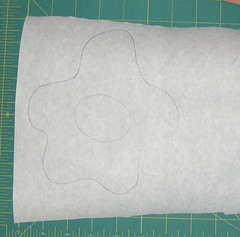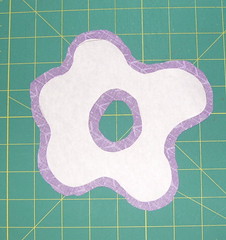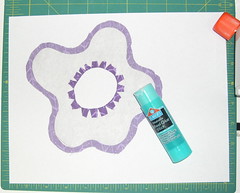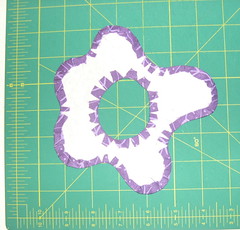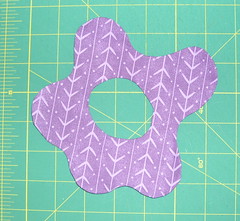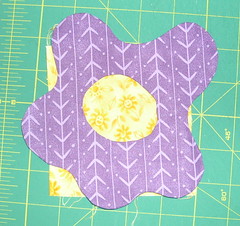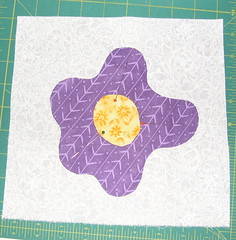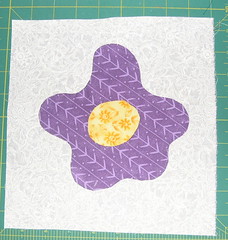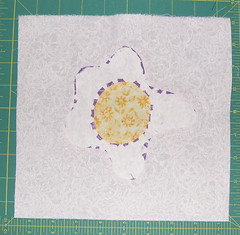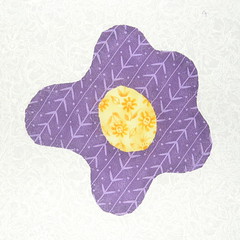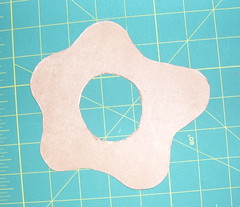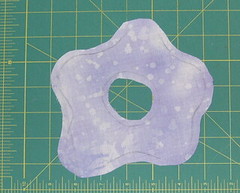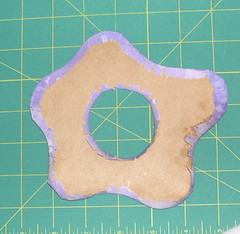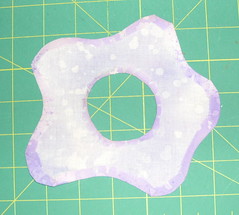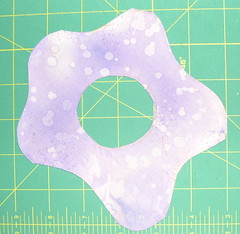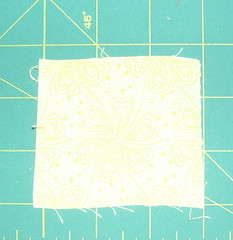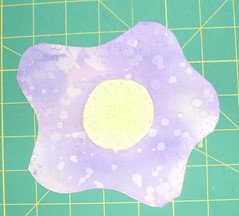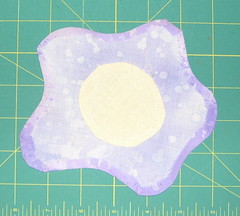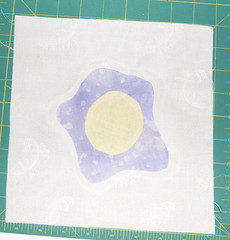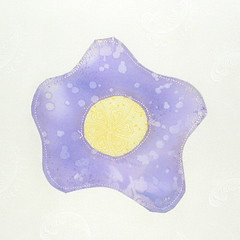Once you wrap your mind around the math, this is an easy, clever way to make to make flying geese units, 4 at a time, with no waste and no dealing with sewing bias edges.
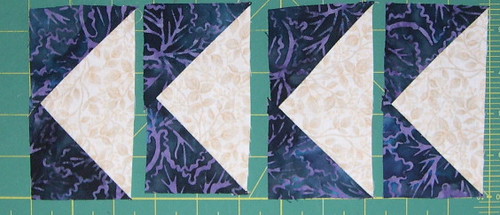
Flying Geese units are typically twice as wide as they are tall. The finished size of my examples is 2 by 4 inches. They were used as the star points in the 8 inch Sawtooth Star blocks we made for the lotto in October, 2007.
Cutting Fabrics
For each set of four geese, you'll need:
- one square of the geese fabric which is 1-1/4 inches larger than the finished width of the geese unit (i.e., 5-1/4 for 2 x 4 inch geese)
- four squares of sky fabric which are 7/8 inch larger than the finished height of the geese unit (2-7/8 inches for 2 x 4 geese).
In this example, the cream is the geese fabric and the batik is the sky fabric.
 Sewing the Units
Sewing the Units
Putting right sides together, line up the edges of two of the small squares with the edges of two diagonal corners of the large square. Draw a line, across both small squares from corner to corner.
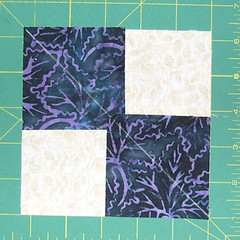
Stitch 1/4 inch on each side of the drawn line. Then cut along the line.
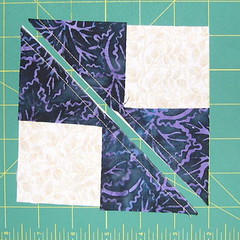
Press the seams toward the dark fabric.
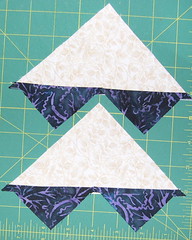
For each half, align a small square in the corner.right sides together. Draw a diagonal line.

Stitch 1/4 inch on each side of the drawn line. Then cut along the line.
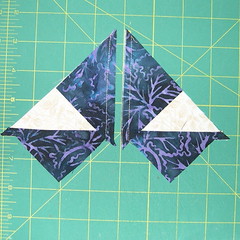
Press the seams toward the dark fabric. You're done.
